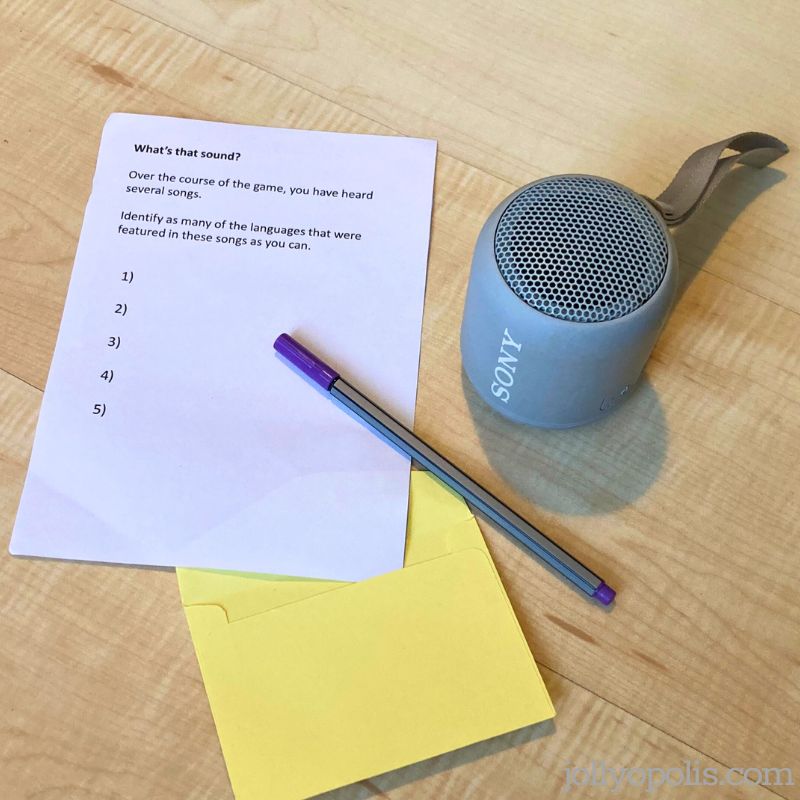Introduction
It can be challenging to organise fun games for large groups where everyone is able to be engaged. This post describes a series of team games that is suitable for children and adults and can support anywhere between 15 and 80 people. The games have been designed to accommodate a wide range of skills as well as giving the opportunity for everyone within the teams to contribute.
These games are especially suitable for large parties or team building events.
I would suggest that instructions are printed and given to each team at the start of each round. Teams can then write down any answers and return them to you once the round is complete. Think about putting each round’s instructions in a different coloured envelope for each team in order to make them easily distinguishable from each other.
Game 1 – What’s the flavour?
This game involves each team trying to identify the flavour of various foods. I would recommend using jellybeans, as these are small, and are available in a range of interesting flavours.
Preparation
Give each team a small bowl containing around 5 different flavours of jelly beans. Make sure that each team is given the same five flavours and that you keep a record of what those flavours are. Instead of asking teams to simply write down the flavours, it may be easier to provide them with a sheet showing many potential flavours. They can then simply circle the flavours that they think were in their bowl.
Playing the game
Teams have a time limit (perhaps 5 minutes) to taste and record the flavours they think were in their bowl. Each team gets 1 point for each correct flavour.
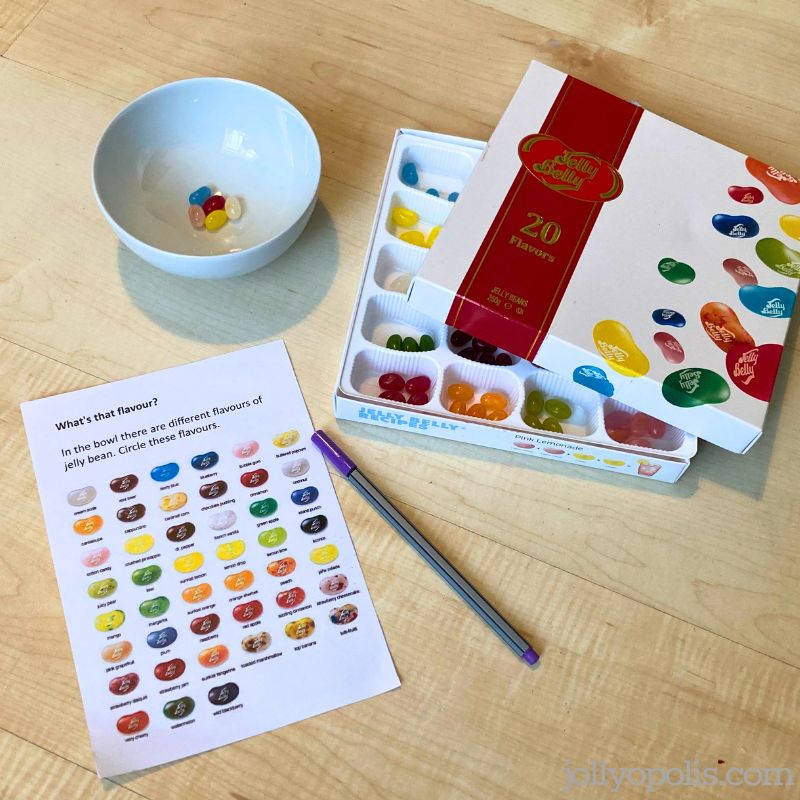
Game 2 – Solve the riddles
This game involves each team trying to work out the answers to as many riddles as possible.
Preparation
Make a list of a number of riddles for the teams to solve. These can either be read out or printed and given to the teams. Some example riddles are:
1) What dries the more it gets wet?
2) Mary’s father has three daughters: April, May and … What is the name of the third daughter?
3) What odd number, when you take away a letter, becomes even?
4) What begins with e, ends with e, but contains just a single letter?
5) What is greater than God, worse than the devil, the poorest has it, the richest needs it and if you eat it you will die?
Answers: 1) A towel, 2) Mary, 3) Seven, 4) Envelope, 5) Nothing
Playing the game
Teams have a time limit (perhaps 5 minutes) to as many of the riddles as they can. Each team gets 1 point for each correct flavour.
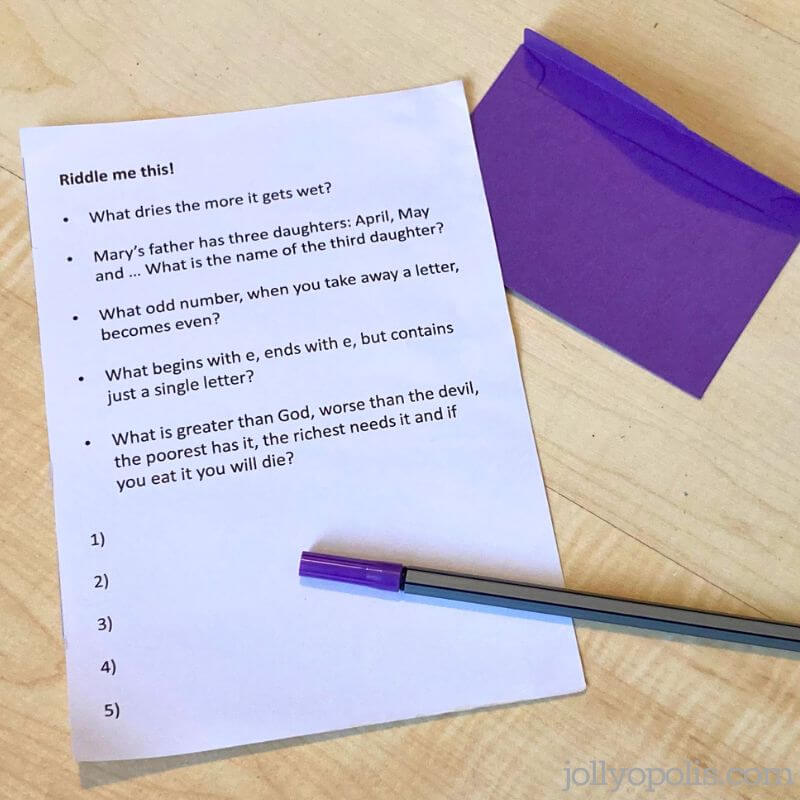
Game 3 – Do not open the envelope!
This round tests the teams’ patience and resolve. Present each team with an envelope with “do not open!” written on it. Any teams that do not open the envelope by the end of the game (or after a predetermined amount of time) receives 5 points.
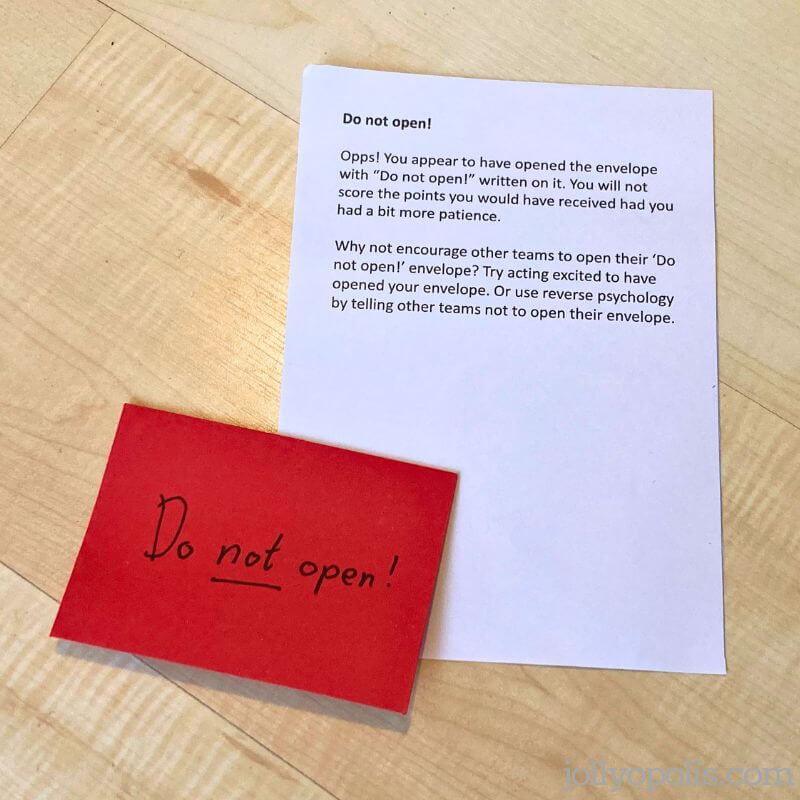
Game 4 – The lowest number
This round requires each team to write down a number in secret. The number should be a whole number between 1 and 20. The team that writes down the lowest unique number receives 5 points.
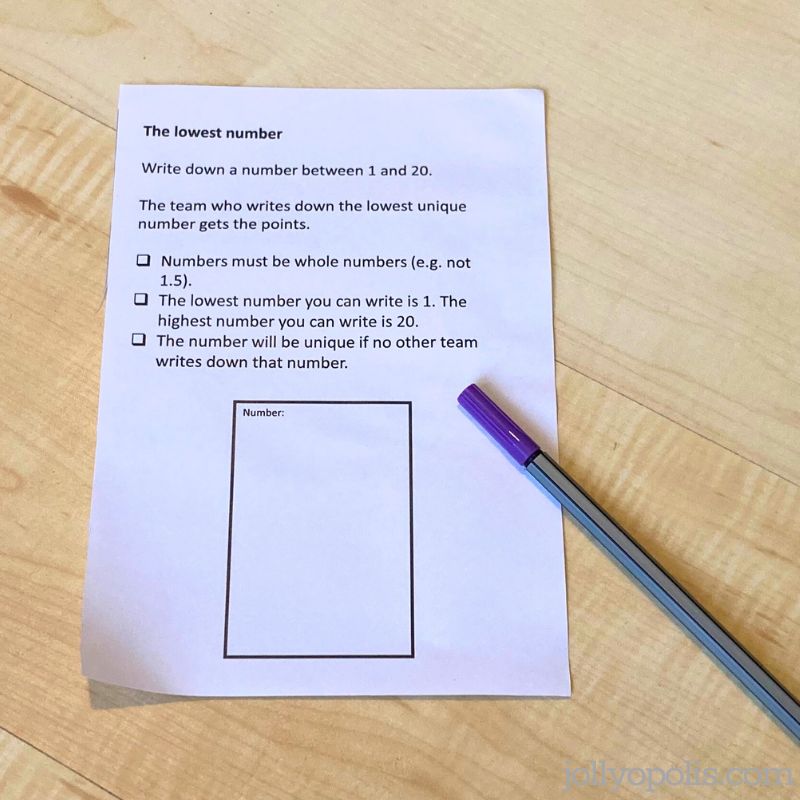
Game 5 – What’s in the box?
This round involves feeling objects hidden inside a number of boxes and attempting to identify what those objects are.
Preparation
Create a number of boxes that allow players to feel inside, but not look inside. Choose one object for each box. Objects should be everyday objects known to the players, but also have an interesting shape.
Playing the game
Teams have a time limit to feel inside the boxes and identify as many of the objects as they can. Consider restricting each player to only feeling inside one box. This will mean that all players in a team will have an important role in the round. Each team is awarded 1 point for each object correctly identified.
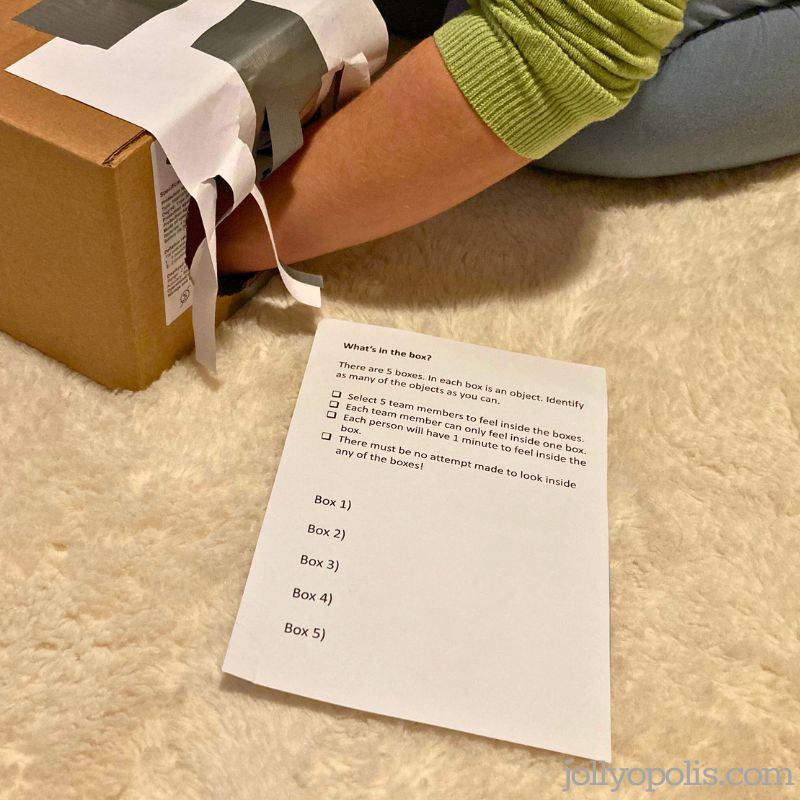
Round 6 – Identify the object from the photos
This game involves teams identifying the everyday objects from close up photos.
Preparation
Provide each team with a number of photos of everyday objects from a close-up perspective (e.g. taken using an electron microscope).
Playing the game
Teams have a time limit to identify and write down as many of the objects as they can. Each team is awarded 1 point for each object correctly identified.

Round 7 – Complete the picture
Teams are provided with a number of picture pieces. However, the pieces are mixed up with pieces from other teams’ pictures. Teams have to obtain (by exchanging pieces with other teams) all the pieces from a single picture and arrange them to make the picture.
Preparation
Print off a number of pictures equal to the number of teams. Cut each picture into a number of pieces (8 pieces is a good number). Provide each team with 8 pieces from the various pictures.
Playing the game
The first team to obtain all the pieces from a single picture and arrange them to form the picture receives 5 points. Set a time limit so that the game does not go on for too long.
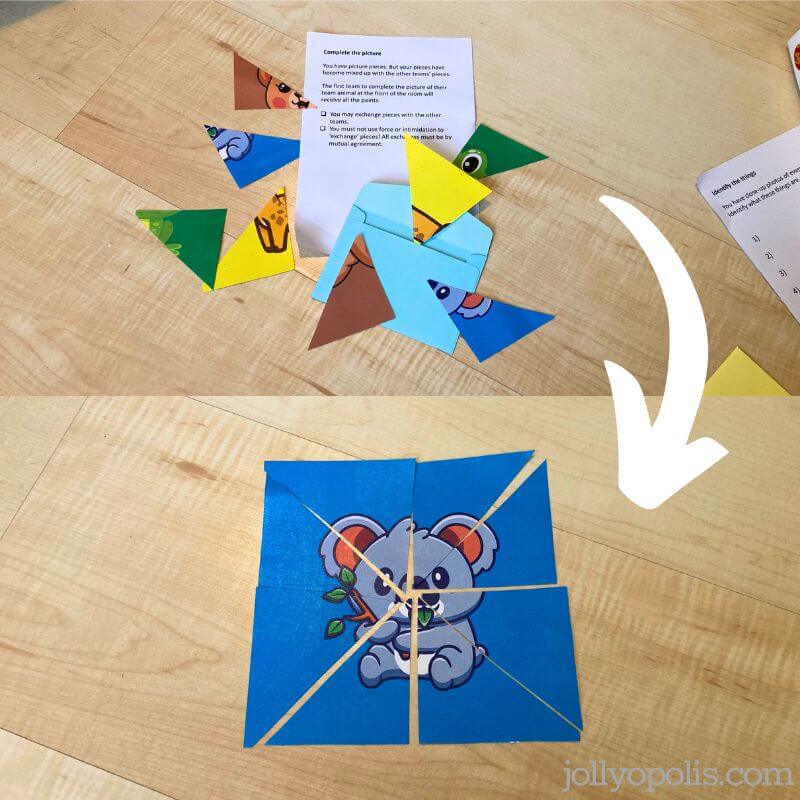
Round 8 – Build a tower
Teams are provided with various materials with which to build the tallest free-standing tower within a set time limit
Preparation
Provide each team with various materials. Materials may include newspapers, paper, cardboard, tape, string. It is important that each team receives the same materials.
Playing the game
Teams have a set amount of time (perhaps somewhere between 5 and 10 minutes) to build the tallest tower from the given materials. You can make it more challenging by requiing that each tower support an object (such as a tennis ball). The team that has built the tallest tower receives 5 points.
Round 9 – What’s that sound?
Several songs featuring different languages are played. Teams have to identify the languages. If you want to be particularly tricky, have these songs play during the previous rounds.
Preparation
Find 5 different sons with each one sung in a different language. Make sure that you are able to play the songs so that everyone can hear the words.
Playing the game
Depending on how long you want this round to last, consider playing only a small portion of each song. Each team writes down the language that they think features in each song.
